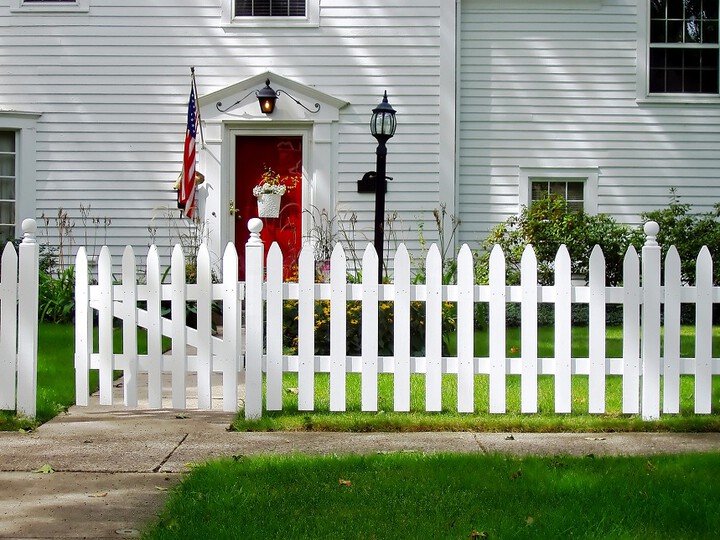From repairing broken posts to maintenance tips, follow these tips according to the professionals.

No matter how beautiful it looked when you first installed it, time can take its toll on a fence. "Mother Nature, weather, and changing seasons can cause damage to all types of fences over time," explains Vance MiCeli G.M. of Gun Hill Fence Corporation. "Other factors are car accidents, fallen trees, animals digging or chewing, and people leaning on them over time." Whether it's made of wood, steel, or wrought iron, there are several ways to determine if a fence is in need of repair. "Common signs to look for include broken fence posts, which often indicates rot, and leaning or loose posts," says Hunter Macfarlane, project expert at Lowe's. "Other common issues include sagging gates and mildew covering your fence, both of which require repairs or restoration for proper and long-term fence use."
If your property has a fence that's in need of repair, you may not be sure of what steps to take next. We asked MiCeli and Macfarlane for tips on how to restore a battered, broken-down fence and here's their best advice.
Reinforce damaged fence posts.
If a fence post is loose or leaning, Macfarlane says all you need to do is reinforce the post by excavating the soil around it, and backfilling the hole with either concrete or a mix of wet sand and gravel. For wooden fences with rotting posts, he recommends digging out the post entirely and replacing it with a new one, set it concrete. "All posts should be at least 24 inches down in concrete," MiCeli adds.
Reseal wooden fences.
If your fence is constructed of wood, Macfarlane suggests restaining or resealing it as often as recommended to protect it from outdoor elements and keep it looking new. "Follow instructions on how often to reapply a stain or seal based on the type of wood the fence is composed of," he says. "Also, be sure to take notice if water fails to bead or the paint begins to flake on a wooden fence; this is a sign that it's time to reapply paint or sealant."
Fix metal fence scratches.
If your fence is made of metal, such as steel, aluminum, or wrought iron, Macfarlane says correcting unsightly scratches is a breeze. "Scratches can be fixed by cleaning away any rust and touching up with paint," he says. "Otherwise, metal fences are very durable and not prone to need repairs."
Maintenance matters.
To help extend the life of your fence (and avoid future repairs), Macfarlane recommends conducting regular maintenance, including replacing rotting posts and pressure washing to remove any plant growth. "Avoid letting mulch or soil pile up against the bottom of the fence and keep hinges and latches well-lubricated with grease or oil," he says. "Homeowners should also be careful with lawn mowers and trimmers around fence posts."
Conduct yearly checkups.
If you aren't inspecting your fence for damage at least once a year, our experts say it's a worthwhile task to add to your to-do list. "Depending on where you live and the type of fence you installed, your fence might require yearly repairs or restoration," MiCeli says. "A wood fence that hasn't been treated with stain or paint can rot rather fast, while some metal fences can last a lifetime."